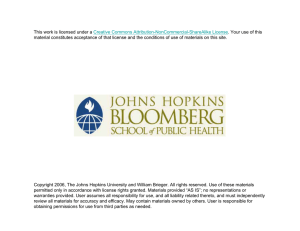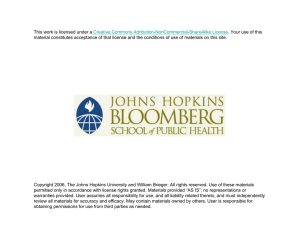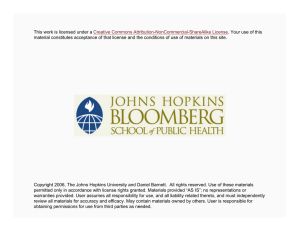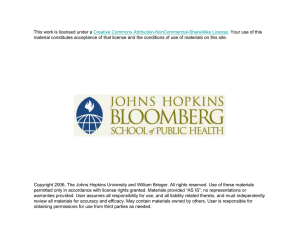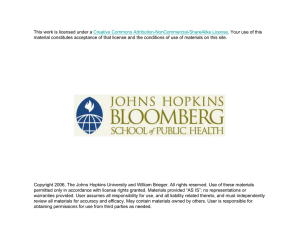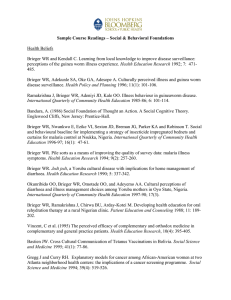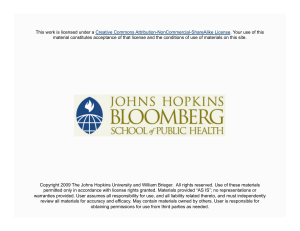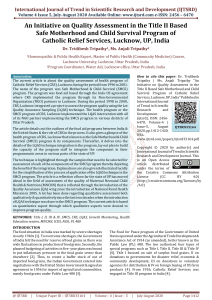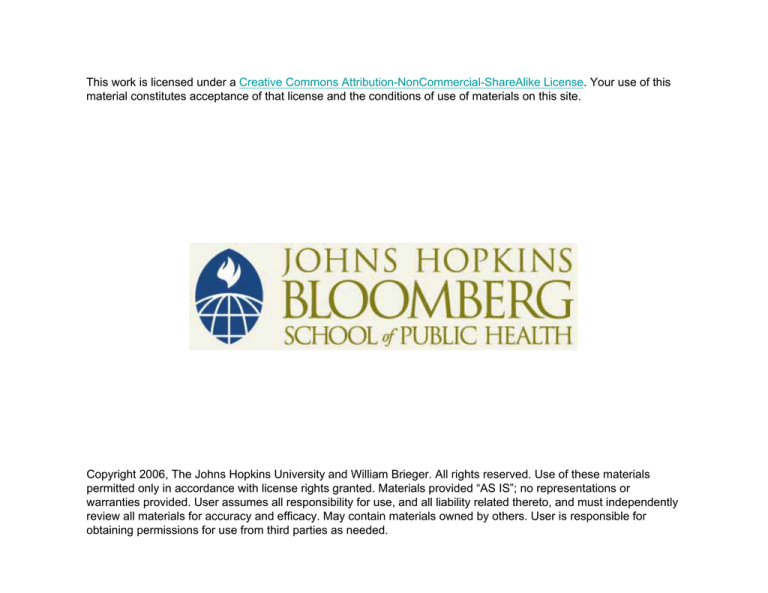
This work is licensed under a Creative Commons Attribution-NonCommercial-ShareAlike License. Your use of this
material constitutes acceptance of that license and the conditions of use of materials on this site.
Copyright 2006, The Johns Hopkins University and William Brieger. All rights reserved. Use of these materials
permitted only in accordance with license rights granted. Materials provided “AS IS”; no representations or
warranties provided. User assumes all responsibility for use, and all liability related thereto, and must independently
review all materials for accuracy and efficacy. May contain materials owned by others. User is responsible for
obtaining permissions for use from third parties as needed.
Organizational Change
William R. Brieger, MPH, CHES, DrPh
Johns Hopkins University
1
Assumptions About
Organizational Change
Ù Change requires a new set of
competencies and attitudes
Ù Change involves everyone in the
organization, not just leaders
Ù Finding a balance between flexibility
and control is vital
Ù Managers are not always in control
2
Apete clinic staff
3
Assumptions About
Organizational Change
Ù Organizations are open systems
Ù Organizational change and
restructuring shifts the balance of
power in organizations
Ù Change is a good thing, ultimately
Ù The goal of change is not
organizational survival for its own sake
4
Health Sector Reform
Another Name for Organizational Change
Ù A “sustained process of fundamental
change in policy and institutional
arrangements to improve the
functioning of the health system and
thereby, people’s health”
– Addressing financing
– Improving quality
– Testing delivery systems
– Decentralization
5
Abolanle health facility
6
Examples
Ù Bamako Initiative
– For essential drugs
Ù Health insurance schemes
Ù New delivery mechanisms
– VHWs
Ù Enhancing community participation
7
VHWs Are a
Second Order Change
Ù New type of health provider
Ù New relationships with the community
Ù New forms of supervision and
partnership
Ù New forms of economic support for
health
Ù New means of accessing care
8
VHW treats
9
Types of Systems Change:
Responder
Ù Change is initiated outside the health
sector, to which the sector has to
respond
Ù Goals are non-health specific
– Democracy
– Economic growth
Ù Change is fundamental, affecting all
areas of government
10
Types of Systems Change:
Resister/Adjuster
Ù Daily fire-fighting
– Lack of motive, perceived need,
means or opportunities for major
change
Ù Goals are health specific
– Tends to be single issue
Ù Incremental change rather than
fundamental change
11
Types of Systems Change:
Reformer
Ù Impetus may be internal or external to
the health sector
Ù Goals are health specific
– Often multiple goals
Ù Change is fundamental
– Sustained
12
Types of Systems Change:
Rebuilder
Ù In the context of post conflict or
disaster
– Instability and insecurity
Ù Goals are health specific
Ù Change is major but not fundamental
change
– Re-creation rather than reform
13
Roll Back Malaria
In the Context of Health System Reform
Ù Prompt and appropriate treatment
cannot occur unless health facilities
function
Ù Appropriate home management can
not be encouraged without health
systems outreach, educational
capacity
Continued 14
Roll Back Malaria
In the Context of Health System Reform
Ù Prevention programs cannot work
without logistical capacity and
relationships with other sectors
Ù Needs assessment determines
capacity
15
The Role of NGOs
Ù Able to innovate
Ù Represent civil society, minority
groups
Ù Reflect community needs and interests
16
17
In 1996, donations to Doctors Without
Borders USA, Inc. were spent as follows:
9%
4%
Program Activities
Management
Fundraising
87%
Doctors Without Borders strives to direct at least 85% of
revenues to relief programs, surpassing this standard in 1995.
18

